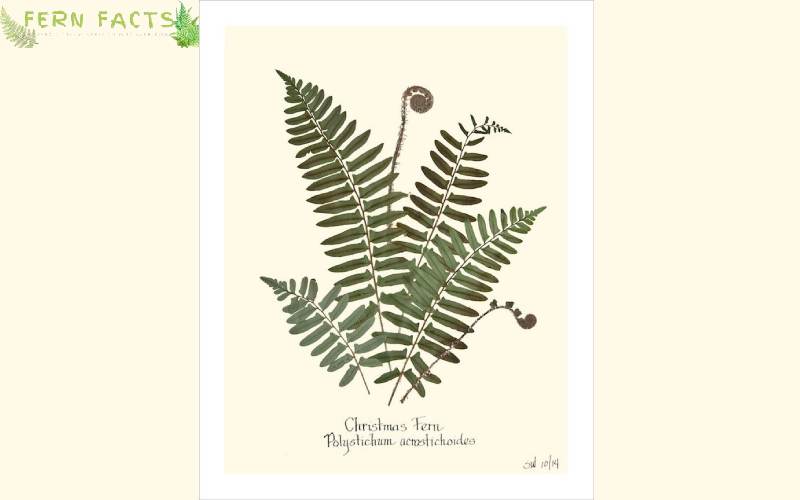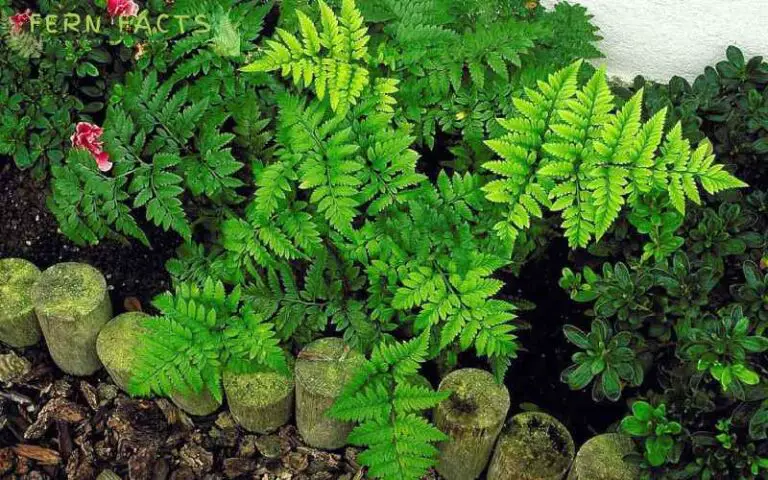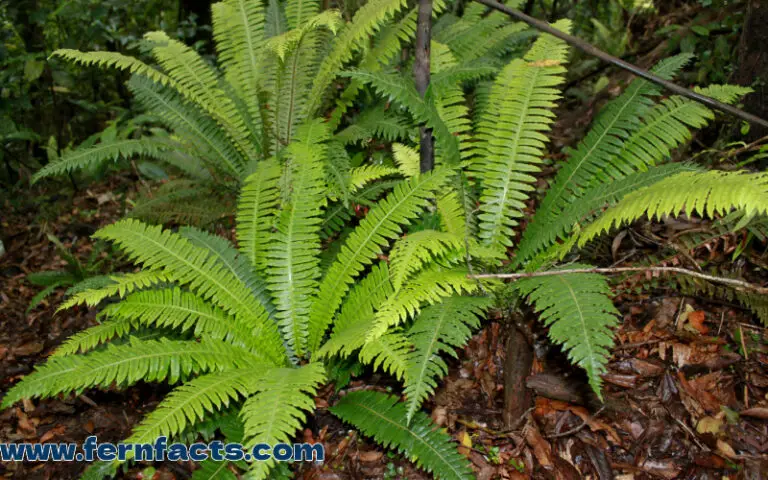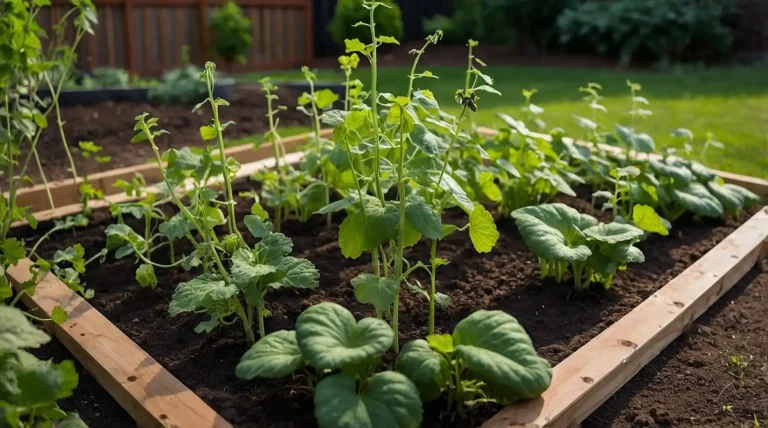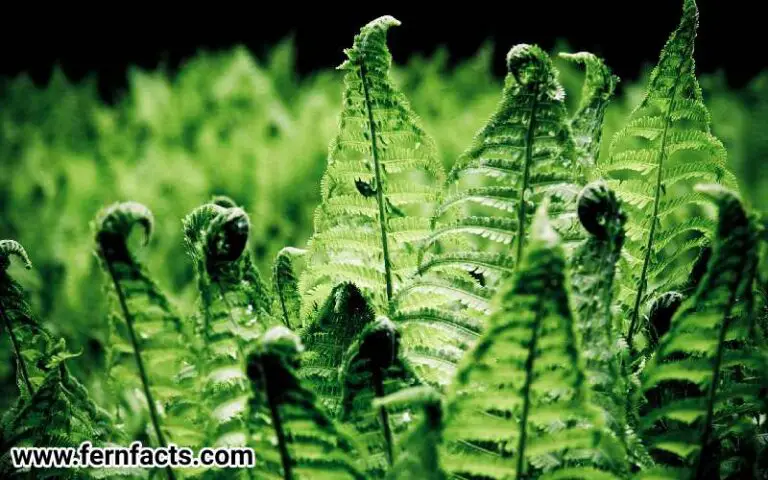Care of Christmas Ferns: Tips for Growing Christmas Ferns
If you are thinking of having an evergreen plant that will remain the greenery foliage in your garden throughout the years then, Christmas ferns will be one of the prominent choices for you.
Don’t worry about their caring and growing tips if you have no idea regarding this plant care and other things.
In this article, I’ll give you all the information from head to toe about Christmas ferns so that you can easily grow this fern at your house.
So let’s start with the general overview of Christmas fern and its characteristics.
Overview of Christmas Fern
- Botanical name: Polystichum acrostichoides
- Plants: Evergreen
- Family: Dryopteridaceae
- Native range: North America
- Shade requirements: Full or partial shade
- Flower: non-flower
- Height: mostly 2 feet
- Soil: neutral or alkaline and moist, well-drained
- Hardiness zone: 3,4,5,6,7,8,9
- Benefits: Deer resistance
Christmas ferns are evergreen plants that are mostly native to North America including Nova Scotia, Florida, and Texas. These beautiful evergreen ferns have beautiful leather ferns that give glossy, green fronds over the year.
Thereby, these ferns will give you a greener foliage appearance throughout the year in your garden.
Generally, these ferns grow best under shady habitats like woodlands, rocky slopes, and stream banks. And so, you can contrast them with different perennial wildflowers in your garden land as well.
Also, you can use them as indoor plants in your house. Moreover, these ferns are very adaptable ferns for cultivation in the yard or the natural park or gardens as a garden cover.
They can give the best shelter to wild birds in your garden by their bushy foliage appearance. Hence, you can get some amazing wild birds visiting your mini home garden.
Prominently, these Christmas ferns are very good barriers to soil erosion mostly in flooding areas. They are also deer-resistant plants.
However, these evergreen plants are also fond of moist damp environments with filtered sunlight. You can also use them as ornamental plants for your garden to make the garden look more natural.
Christmas Ferns Care and Maintenance
To give them their ideal atmosphere and basic requirements, follow these guidelines below here:
Light Requirements
Christmas fern prefers dappled or filter shade to thrive. It means they can grow actively if they get indirect filtered sunlight.
Although they can tolerate full shade, you better give them filtered shaded places to make them bloom and thrive. Direct sunlight could be troublesome for these plants although they can tolerate full sun exposure.
However, excessive sun exposure can give these plants a hard time to grow and thrive. Hence, these ferns need partial sunlight for about 3 to 6 hours.
Other times, you can keep these plants in a fully shaded place.
Water Requirements
Christmas ferns will require a generous amount of watering to grow. Hereby, You can give them water once a week according to their soil moisture.
This will balance your plants’ hydration level. Although Christmas ferns can tolerate moderate levels of drought not for too long.
That’s why you need to give them water once a week. This will keep the soil moist and hydrated neither too dry nor too watery.
Try to avoid pouring excessive water which might damage their roots and give them black spots as well.
Soil Requirements
Like many other ferns, these Christmas ferns also thrive in moist well-drained Soil. That’s why, try to choose mildly acidic or neutral soil with well drainage soil.
Because these ferns are very prone to crown rot if their water doesn’t log out properly. That’s why you need to choose well-damaged soil that helps them to log out all the extra water from the soil.
Similarly, rich humus organic soil also helps them to grow and thrive. You can enrich the soil’s quality by adding organic compost or matter to it.
Also, adding mulch around the surface; will hold back the nutrients and moisture in the plants as well.
Temperature and Humidity
Christmas ferns like humid conditions. They don’t prefer dry or hot environments rather it harms the plants severely. Therefore, try to balance the temperatures in between 55 to 70 degrees Fahrenheit.
Also, they will require a minimal 50% humidity in the air to grow properly. You can mist the fronds to increase the humidity in the air or you can use a humidifier near the plant.
Pruning and Grooming
Although they are evergreen plants Still they will lose some fronds in the winter season. Some fronds will be crispy brown or yellow.
So, you can simply just remove those dead brown fronds before their growing season. It will keep the plant fresh and foliage.
However, don’t over-prune and trim; it might damage the plant’s growth. Additionally, your plant’s photosynthesis potential might be damaged severely.
Read More: Crocodile Fern Care
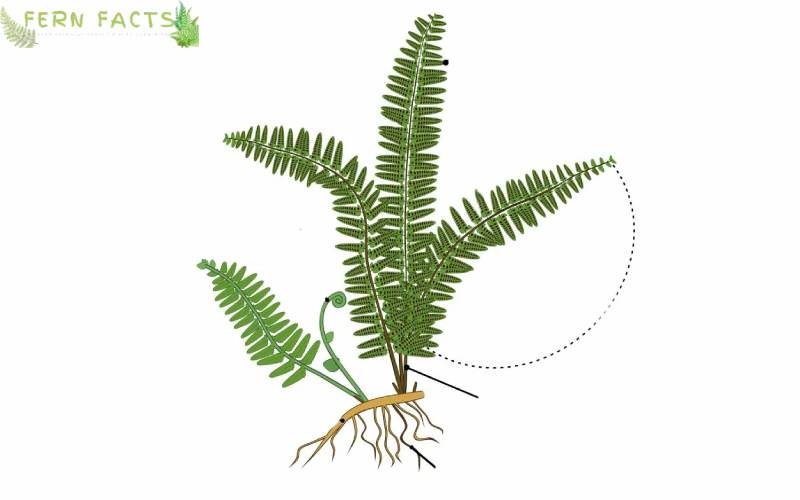
How to Do Propagation of Christmas Ferns
Well, Christmas ferns can be propagated by both root division and spores collection methods. Here are those methods:
Spores Collection Process
Although spores collection will be a little challenging, Still if you have determination you can grow plants from spores easily.
If you have a mature plant, then you can easily go for this process without any hesitation. If not simple just follow the root division method.
So, for the spores collection process, simply choose your mature plants. Look closely whether the plant has ripe spores underneath the fronds or not.
If it has, then take a white paper or white cloth. Flicker the fronds and let the spores fall on the paper or cloth. Now, mix a container with rich soil compost.
Then, spread the spores on the surface of the new soil and cover the seeds with soil.
Later water the soil’s surface and make sure the soil is moist until you see any growth. Remember, you have to place the container in indirect or shaded places. Don’t locate them where they can get direct sun exposure.
It might burn the seeds before it starts to grow. So your process will be a failure. Usually, it will take a couple of weeks to grow.
After a couple of weeks, you can see the new growth which means your propagation is done successfully.
Lastly, just follow the normal caring and maintenance requirements to have a flourishing evergreen Christmas fern in your house.
Root Division Process
For this root division process, choose any healthy-growing Christmas ferns from your garden. Remove your plant gently.
The land or from the pot. Later on, dust off the soil from the plant and divide the plants by their roots with your pruning tools. You can also use your hand to divide.
While diving the part, make sure each part has the same amount of roots. Then replant each part into a pot or a container or in your garden land with a new soil mixture.
For mixing the soil, you can add organic matter, compost, and peat moss to it. Rich humus soil will help your Christmas ferns to grow robustly. Last, water the plants thoroughly to keep them hydrated.
Christmas Ferns Problem and Solutions
Let’s look for some common diseases and problems so that you can cure these ferns beforehand.
Yellow and Brown fronds
Yellow and brown fronds are the main issues of these evergreen Christmas ferns.
This might happen because your ferns are getting too much sunlight or sun exposure which is making their fronds dry and brown.
Ultimately, it will lead your fern’s fronds to have burnt leaves. In such cases, relocate your plant posting as soon as possible. Try to place them where they can get filtered shaded, not direct exposure.
Brown Spot
Brown spots are another common disease of these Christmas ferns. This might get worse in the warm and wet atmosphere.
One of the possibilities for this could be overwatering or water-logged situations. If ferns stay in the standing water for a longer period, then their fronds might get brown spots.
Therefore, you need to balance the watering techniques to reduce these brown spot issues. Water once a week. Check the soil’s condition before watering.
Excessive water-logged situations can lead your ferns to have rotten roots as well. So cautiously follow the water requirements to give them a thriving environment.
Benefits of Christmas Ferns
Regarding general fern characteristics, these ferns are very beneficial to the land and to nature as well. Here are those factors:
- Christmas ferns are very effective ferns that can prevent soil erosion. Thus, these plants will be a great addition to the land that is facing soil erosion problems.
- Christmas ferns are deer-resistant plants that can protect a garden land from Deer to destroy. Because deer cannot resist the smell of ferns, they avoid these types of plants.
- These ferns will be great habitats for wild birds by providing them shelter in the garden. Their bushy greenery appearance will attract birds to the garden.
- Christmas ferns are also great medical plants that can also work as a blood purifier in ancient times. Similarly, in many medical cases like stomach pain, and fever, these ferns are used. Also, its young fronds can be edible. So many people have been eating these fronds for several medical purposes.
Final Observation
On a final thought, Christmas ferns are one the best evergreen ferns to grow as a houseplant. By giving them their ideal condition and requirements you can also give them a thriving atmosphere to live in.
However, you might face some problems like yellow, and brown fronds, and brown spots while growing these ferns. But if you follow the ideal lighting and watering process, certainly you will overcome these issues comfortably.
Since these ferns have lots of benefits, like reducing soil erosion, deer resistance, attracting birds, etc; thus, these Christmas ferns will be a great addition to your home garden that will give you a mini nature-centric view.

